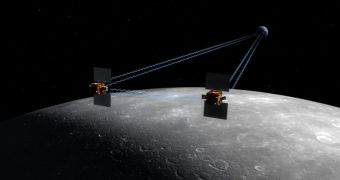Experts at the American space agency are in the final stages of completing two spacecraft that will fly to the Moon as part of the GRAIL mission. The twin probes are destined to measure the gravity field around Earth's natural satellite in unprecedented levels of details.
The mission has been under development for many years, but it's only now that all the essential pieces of the puzzle came together to allow experts in charge to set a launch date.
At this point, the two lunar satellites are scheduled to launch aboard a Delta II delivery system, from Space Launch Complex 17B (SLC-17B) at the Cape Canaveral Air Force Station (CCAFS), in Florida.
NASA plans to send the spacecraft to orbit on September 8, 2011, and is aiming for an early January 2012 orbital insertion date. This is when the GRAIL components will take their place around the Moon.
GRAIL (Gravity Recovery and Interior Laboratory) will only be effective if both of its satellites work together once they reach their destination. It's only by working in tandem that the spacecraft can produce the detailed measurements that are required of them, and that would justify their existence.
By analyzing the gravity field of the Moon in more detail than ever before, experts will become capable of peering even deeper under the natural satellite's surface than ever before.
Using these data, geologists could then infer the existence of subsurface structures, and the thermal history of the space body as a whole. This would be tremendously important for clarifying our planet's history as well, Space reports.
In order to ensure the high-quality of the GRAIL science return, NASA has tapped its Jet Propulsion Laboratory (JPL), in Pasadena, California, to manage and operate the twin spacecraft.
The American space agency further selected the Cambridge-based Massachusetts Institute of Technology (MIT) and the Denver, Colorado-based Lockheed Martin Space Systems to be the main contractors on this project.
Unlike other lunar missions, this one will be quite short, at only three months. NASA experts say that it will conduct science in lunar orbit between March and May of 2012. These dates are subject to change without notice however, depending on how the flight progresses.
“The overall mission from launch to end of science collection is just under nine months,” explains Lockheed Martin Space Systems GRAIL chief engineer, Stuart Spath. “In our 90 days of science mission, we only use 200 grams of fuel,” he concludes.

 14 DAY TRIAL //
14 DAY TRIAL //